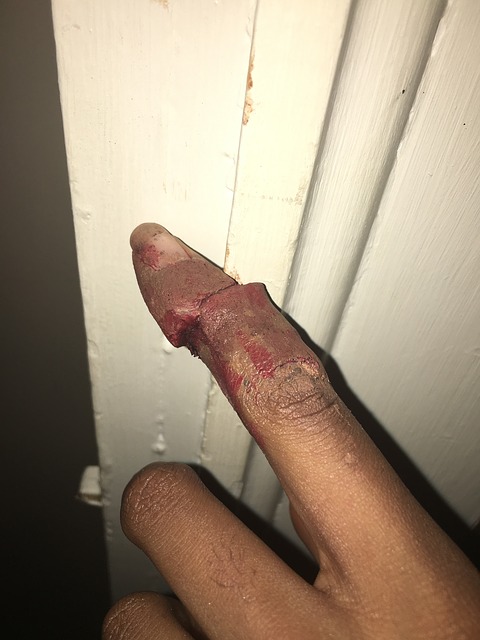Is it normal for my hand to hurt while playing guitar?
First, a little about me!!
Feel free to scroll on, I won’t be offended; much!
I’ve played guitar for 20 years, been in all sorts of bands (professional and amateur), recorded songs, taught guitar (now have a website: https://www.fretsuccess.com), degree in acoustics, built a guitar etc. etc. So, I’ve been around a bit.
So, is it normal for my hand to hurt while playing guitar?

The short answer is, YES! It can be normal.
It can be normal in two ways:
One: we must work through a little bit of strain and muscle fatigue when building our strength, so it can be perfectly normal to feel some discomfort. But, if it lasts from session to session with no improvement or it gets worse, then there’s a more significant underlying issue with your body or technique; and
Two: it’s normal in the way that a lot of guitar players over do it and cause themselves harm. Let’s try a stop it from being a regular occurrence.
What are the different types of pain or uncomfortable feelings when playing guitar?
There are a few different types of pain that you experience when playing guitar.
But, most of them are related to overusing a muscle or just using it in a way you haven’t used before.
There’s a difference between pain and fatigue.
There’re a few conditions that can be developed if you’re not careful when playing guitar.
There is such a thing as too much practice.
Let’s investigate this in more detail.
I go into more practice tips on a free email course on my best guitar practice strategies.
You can click here to sign up to it!
The more people I get signed up will help me know that my content is helping. So, please sign up! It would be brilliant if you took the 30 seconds to enter your email in a box and click Go!
Right, where were we?
Where is the pain coming from?
In general, if you are experiencing pain during playing guitar it’s likely to be due to muscle weakness or disorders linked to over playing.
Pain is where your body is physically experiencing trauma and it is very uncomfortable to do anything with the pain. This is caused from putting too much pressure into your playing or putting your muscles and joints through a lot of repetitive motions.
You can develop pain through having your hand in the wrong position. I’ve seen this happen but it’s not as common as just over doing it.
I’ve been there.
Locking myself away for 6 hours playing Satriani licks or doing that 8-hour Jam session. Seems like you’re doing great things for your development, but you just need to remember to take it easy. Even the pros do that!
Cramp
That’s right, sometimes the pain is just cramp.
It comes from:
- playing to tight on the neck;
- not stretching before playing; and
- issues with salt content in the blood.
Cramp can be alleviated easily my taking it easy, stretching and drinking enough water. You may also find that you could need medication if you find cramp happens too regularly and after little exertion.
Repetitive Strain Injury
This bracket covers the general area of guitar related injuries.
Repetitive strain injury is quite simply a muscle strain from doing a task over and over and over and over and over…
The muscle/joint/tendon gets tired.
If you have a short-term repetitive strain injury, where it’s a new feeling, then just taking it easy and relaxing for a day or two should get you back on track.
But, it’s important to then figure out what was causing you to get this RSI?
Most likely it was just playing for too long and maybe going over a certain track or riff repeatedly. Your muscles, and joints are tired, and they don’t like just doing the same thing repeatedly.
It may be that you’re playing a new chord shape that it outside of your comfort zone. It’s OK for your hand to feel uncomfortable.
But, just remember to take regular breaks; especially if you’re doing unusually long stretches of repetitive drills.
If you carry on through the pain, you may develop some of the more lasting disorders like Carpal Tunnel Syndrome or Tendinitis.
So just take regular breaks and work on drills to build more strength in your hands (tips at the end of the article to help) to minimize strain.
If you find yourself still being strained with relatively simple tasks, then it’s time to get a lesson with someone to get you playing in the right position.
The thing about lessons is, you don’t need to have a guitar tutor on a weekly basis, you can just book a “check up” lesson with someone to just put you in the right direction or sort any immediate issues out.
I’ve done this a few times over the years and it’s a great way to keep the cost down but still get structured guidance and ability to sort any potential issues out early on.
Having a couple of lessons at the start of your playing will really help you get off to the best start.
From then on you can probably just get away with correspondence based lessons.
Having a regular tutor isn’t cheap, it’s the best way, but not all can afford it!
So, if you carry on feeling pain and play through it then you’ll probably be able to expect some of the following, more serious issues.
Carpal Tunnel Syndrome
Carpal Tunnel Syndrome is where you get a tingling sensation or numbing of the hands. It’s related to getting extra pressure on the wrists.
All you need to help with this is building up strength, which comes from doing specific exercises.
Tendinitis
This is a more serious result from overplaying.
It’s when your tendons become inflamed and they go tight and rigid.
This is normally caused by playing the guitar in the incorrect position and/or playing for a significant amount of time.
So, we know there’s a problem.
What can we do to reduce the effects of this? I’ve got a few suggestions to consider.
Tips for avoiding fatigue or pain when playing guitar
Here are some of my tips for reducing and hopefully avoiding pain/muscle fatigue when playing guitar:
- Take regular breaks and adjust the number of breaks in relation to how strenuous the thing is that your trying to play. This isn’t meaning technical difficult but more strenuous on your fingers, wrists and arms;
- Build up strength in your fingers and joints. There are plenty of tools out there to help but you just need to work on building up them muscles either using a Gripmaster style device or just something firm to squeeze, like a stress ball or tennis ball etc. You can do this whilst watching TV or doing other non-guitar related tasks;
- Avoid playing repetitive segments for a long period of time. If something is repetitive, then be aware of this and take breaks from it.
That doesn’t mean you have to stop playing it just means opt for something to break up that repetitive motion.
If you’re working on a solo, then opt to mix in some chord or theory practice to break it up; - Warm up your hands. Do this by doing hand, wrist and arm stretches but also make sure your hands are physically warm.
If they’re not warm just go wash your hands with hot water for a few minutes. Plus, your strings will last longer because your hands will be nice and clean before you start😉;
I find that if I haven’t played my acoustic guitar for a while, concentrating on electric too much, I get more fatigue. This is normal, but you need to just ease yourself back in to rather than assuming you have the same stamina as on electric.
- Electric guitars are generally much kinder on your joints and muscles for a few reasons:
- Neck profile is smaller, so easier to get your hands around the neck;
- Electric guitar strings are generally lower gauge, so easier to press down; and
- The electric guitar is typically an easier shape to get around, acoustics can be large and cumbersome. Whereas electrics are generally more ergonomically shaped;
- Lower you string action. The height of the strings makes a big difference to play ability, especially if you’re just starting out;
- Switch to a lower guitar string gauge. Careful, this will increase the height of the strings from the fret board, so make sure you adjust your truss rod or get someone to set it up for you, you should do this anyway as it will make your guitar play at its best;
- You will typically get more strain on your joints when standing up, it’s a fact. So, try doing periods of standing up and sitting down; and
- Design your set lists for live performance so that you mix up the playing style, so mix between chord work and solos.
I hope this article has helped you understand more about the sources of pain when playing guitar and how to reduce/stop them.
Just take it easy and plan your rehearsal time accordingly.
I go into more practice tips on a free email course on my best guitar practice strategies.
You can click here to sign up to it!
Happy guitar playing.
Cheers,
Dan
(https://www.fretsuccess.com)
